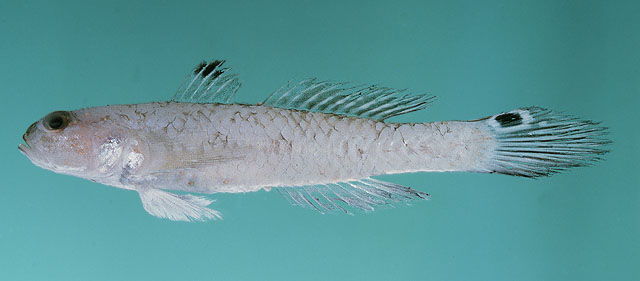|
Parachaeturichthys polynema (Bleeker, 1853) Taileyed goby |

|
|
photo by
Randall, J.E. |
| Family: | Gobiidae (Gobies), subfamily: Gobiinae | |||
| Max. size: | 15 cm TL (male/unsexed) | |||
| Environment: | demersal; marine | |||
| Distribution: | Indo-West Pacific: south to Natal, South Africa; India (Ref. 4833) and Japan (Ref. 559). | |||
| Diagnosis: | Dorsal spines (total): 7-7; Dorsal soft rays (total): 9-11; Anal spines: 1-1; Anal soft rays: 9-10. Body greenish; fins dark; upper caudal fin base with a large black spot surrounded by yellow (Ref. 2798). | |||
| Biology: | Parachaeturichthys spp. Inhabit deep water (Ref. 42915). Rarely enters estuaries (Ref. 4833). Captured by trawls over mud bottom (Ref. 11441). Found to contain tetrodotoxin (TTX) and anhydrotetrodotoxin (anh-TTX) which causes paralytic food poisoning (Ref. 54777). | |||
| IUCN Red List Status: | Least Concern (LC); Date assessed: 25 June 2018 Ref. (130435) | |||
| Threat to humans: | poisonous to eat | |||